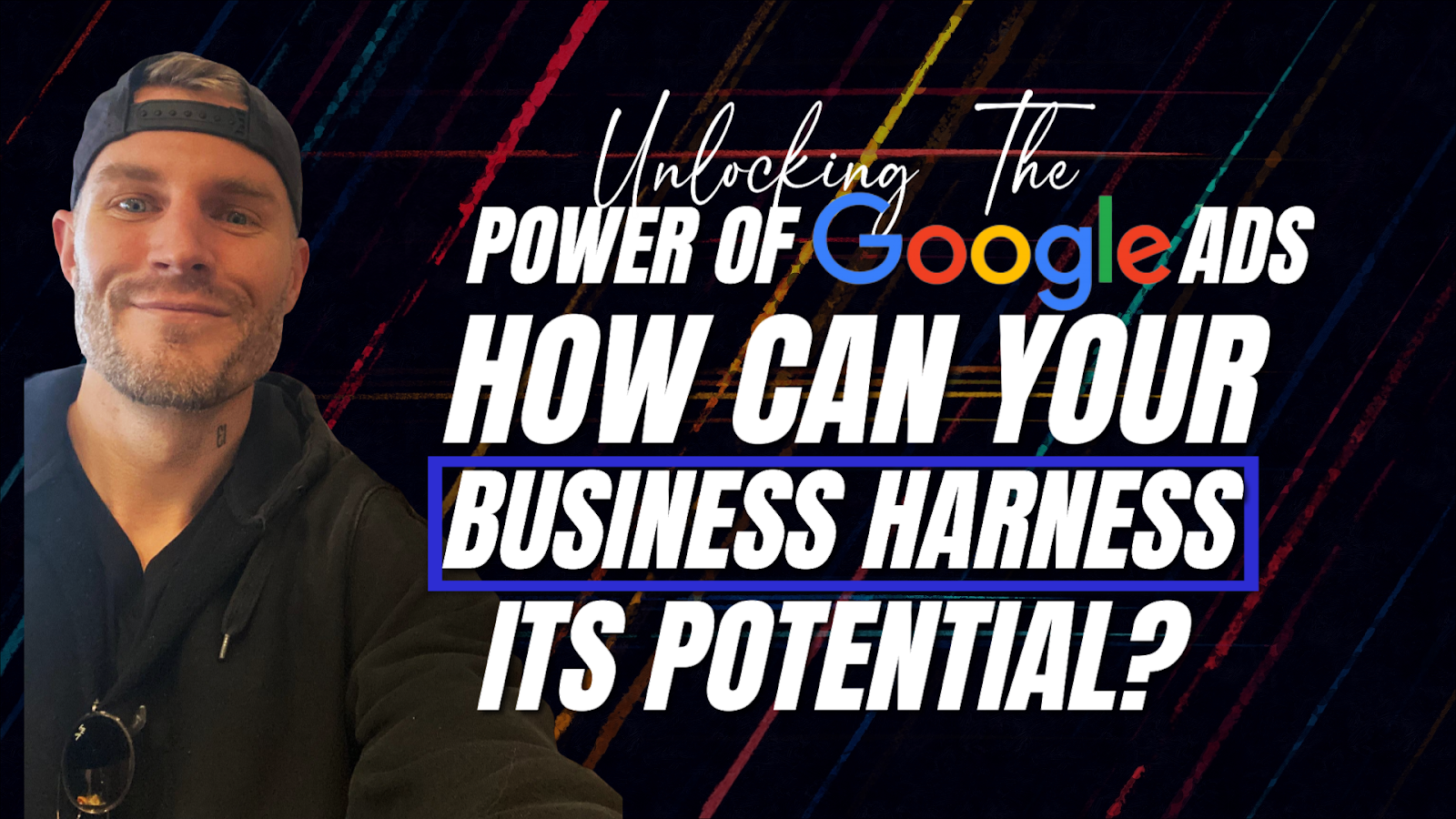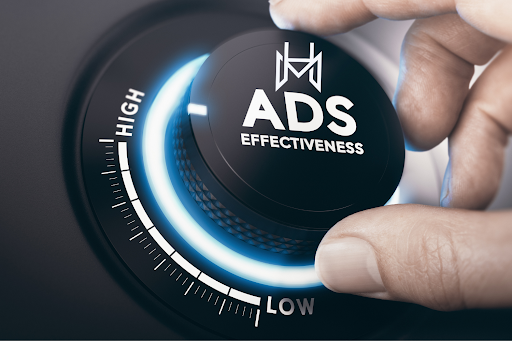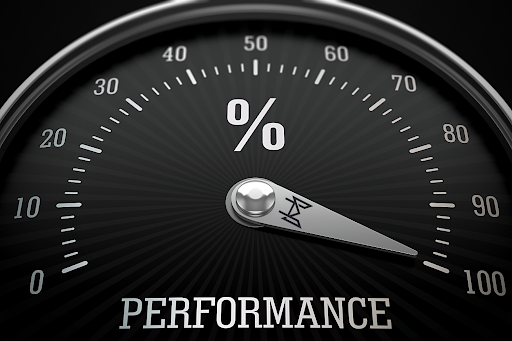
Unlocking the Power of Google Ads: How Can Your Business Harness its Potential?
Look, if you’re running Google ads and looking to increase your conversions, you need to understand the power of Google and how you can harness it to its full potential.
You probably already know, and if you don’t, I’m not sure where to start to help you, but Google Ads is a powerful tool for businesses to reach their target audience and drive conversions.
Google makes running ads easy, but they can become an expensive mistake if you don’t know what you’re doing. So, the trick to unlocking its full potential is understanding what Google ads can do and how you can make them more cost-friendly.
What is Google Ads?
Google Ads, formerly known as Google AdWords, is an online advertising platform developed by Google. It allows businesses to create ads that appear on Google’s search engine results page and other Google properties.
This is an important advertising platform because Google, with over 246 million unique visitors, is the most visited website worldwide, making it an essential platform for businesses to advertise on.
With Google Ads, you can reach potential customers at the exact moment they are searching for your product or service, making it one of the most effective tools for driving conversions.
By targeting specific keywords, demographics, and locations, you can tailor your ad campaigns to reach the right audience and make sure your message is seen by those who matter most.
Plus, its analytics allows you to track user engagement and adjust your strategy accordingly.
All in all, Google Ads is a powerful tool for businesses looking to get their message out there and increase their conversion rates.
Types Of Google Ads

Google Ads offers several different types of campaigns, each with its own advantages and challenges.
Text ads are the most basic type of campaign and allow you to create an ad that appears in search results quickly.
Image ads are great for creating visual impact, while video ads can grab attention and engage users with their motion and sound.
App ads help you reach a mobile audience, while Shopping Ads let you showcase your products directly in search results.
Each type of campaign has its own unique benefits and drawbacks; it’s important to understand them all so you can choose the best option for your business or organization. Consider how each type of campaign could benefit your marketing goals and select one that suits your needs.
Search Ads: You’ve seen Google search engine ads before. They’re the ones that appear at the top of the search results page with the word “Ad” next to the URL.
These ads can help your business by increasing your visibility on search engines, leading to more traffic to your website. They look like regular search results, making them easy to spot.
Display Ads: Google’s display ads are images that show up on the Google Display Network. This network comprises over two million websites, apps, and Google properties like Gmail and YouTube.
App and Shopping Ads: So there’s something called Google shopping ads. They appear on the SERP but look different from regular search results. Instead, they show up as a shopping carousel which is great if you sell physical products.
Video Ads: Your video ad on Google will appear before or during videos on YouTube. These are crucial components of your Google ad campaign since people prefer watching videos over every other platform. But don’t just go throwing money on YouTube ads, there is a way to do it to increase your YouTube conversions and kill it on your sales.
Benefits of Using Google Ads
Ok, so with Google Ads, you have a powerful tool for your business as you try to get your message out there and increase your conversion rates.
And this is a great way to reach potential customers when they are searching for your product or service, allowing you to tailor your ad campaigns to the right audience.
Additionally, with its analytics, you can track user engagement and adjust your strategy accordingly. This helps ensure that your ads are seen by those who matter most and that you’re not wasting time and money on ads that don’t work.
Furthermore, Google Ads also allows you to create multiple campaigns targeting different keywords, demographics, and locations giving you more control over where your ads appear. Because of these benefits, Google Ads is an invaluable resource for businesses looking to maximize their advertising budget.
Understanding Your Customers

Look, if you want to make your ads convert well, you need to understand your potential customers.
Understanding your customers is vital to make sure your Google Ads campaigns are as successful as possible.
To start with, it’s essential to know your target audience and their needs and wants.
Researching the demographics of your target market can help you create ads tailored toward them and ensure that they see it. Still, if you really want to target your customers highly, you’ll need more in-depth data than what Google Analytics provides.
On your Google Analytics, you’ll find some decent data like where a person is accessing your ads from, the type of device they use, demographics, and more.
The problem is that the reporting will only focus on the most recent interactions, so say you’ve been running ads for 6 months.
The analytics will only focus on reporting your customer’s most recent interactions with the ad.
Instead, you’d want to know where you found the customer, whether it was from an organic search, a paid ad, or an ad on another platform that led to them finally clicking your most recent ad.
Knowing your customer’s background interactions will set you up for much better optimization of future ads.
Additionally, understanding user behavior can also be beneficial when creating ads.
For example, suppose you notice that a certain group of users has a higher conversion rate when seeing an ad for a particular product or service. In that case, you may focus more heavily on targeting those users in future campaigns.
Ultimately, understanding your customer base will help you create more effective ad campaigns that have a better chance of converting potential customers into loyal ones.
Researching Search Queries and Terms
When it comes to Google Ads, researching search queries and terms is essential for success.
By researching the most commonly used search terms related to your product or service, you can ensure that your ads appear in front of the right people.
Additionally, researching relevant keywords and phrases can help you create more targeted ad campaigns that are better suited to reach potential customers.
This can also help you save money by targeting specific users instead of relying solely on broad-match keywords. For example, at Hyros, I target broad-match and long-tail keywords as part of my strategies; it works repeatedly.
Taking the time to research search queries and terms will pay off in the long run by making sure your Google Ads campaigns are reaching the right people and increasing conversion rates.
Identifying Potential Customers
Look, in order for your business to grow, you need to find and identify potential customers.
Knowing who your target audience is will help you create more targeted ads and increase conversion rates.
Start by researching the demographics of your current customer base, such as age, gender, location, income level, etc.
You can also use tools like Google Trends to identify popular search terms related to your product or service.
This will help you find out what people are searching for and determine the best way to target them with ads.
Additionally, you can use Google Analytics to get insights into how users interact with your website and better understand their interests and needs.
Taking the time to research potential customers will help you create more effective campaigns that are tailored to reach the right people and improve ad conversions.
Geographical Targeting And Physical Location

Using geographical targeting and physical location are important considerations when creating your Google Ads campaign. Knowing your potential customer’s location will allow you to target them more effectively and significantly help your retargeting efforts.
With geographical targeting, you can choose to show your ads in a specific region or set of areas, such as countries, states, cities, zip codes, or even individual neighborhoods. This way, you can ensure your ads are being seen by people who may be interested in what you have to offer.
Additionally, physical location is also important for businesses that provide services in person.
For example, if you run a restaurant or retail shop, it’s crucial to target users within close proximity so they know where to find your business and can easily access it.
Likewise, if you’re running a digital product ad, geographical location is essential so that when you retarget your audience, your ads are much more relevant and contextual.
By considering geographical targeting and physical location when crafting an ad campaign, you can ensure your message reaches the right people and helps increase conversions.
Personalizing Ads to Different Audiences
One of the most important tactics to use in optimizing your Google ads performance is personalizing your ads.
Personalizing your Google Ads campaigns to different audiences is one of the best ways to ensure maximum impact and ROI.
By segmenting your audience into different categories, such as age, gender, or geographic location, you can create ads that are tailored to their specific needs and interests.
For example, if you’re targeting seniors in a certain area with a product or service, you’ll want to create an ad that speaks directly to them and emphasizes its benefits for their lifestyle.
You can also personalize ads by using dynamic keyword insertion, which allows you to automatically insert keywords related to each individual user’s search query.
This helps ensure that your ad is relevant and more likely to be clicked on. Personalizing ads is an essential part of any successful Google Ads campaign; make sure you take the time to craft advertisements that speak directly to each of your target audiences for maximum effectiveness.
Setting Up Advanced Bidding Strategies And Match Types
You’ve focused on better targeting and, using broad keywords, personalized your ads, and now it’s time to focus on your bidding strategy.
When it comes to maximizing your Google Ads performance, advanced bidding strategies and match types can be incredibly helpful.
Bidding allows you to choose the maximum amount that you’re willing to pay for each click on your ad, while match types give you control over which searches your ad will appear for.
Advanced bidding strategies like Enhanced CPC (eCPC) use AI to optimize bids in real-time, while Target CPA (Cost Per Acquisition) helps you reach a desired cost-per-acquisition goal.
Match types include Broad Match, Phrase Match, and Exact Match, each of which offers a different level of control over the searches your ad appears for.
Analyzing Conversion Rates And Tracking Performance

Analyzing conversion rates and tracking performance is essential to any successful Google Ads campaign, and this step is where most people make the most expensive mistakes.
Here’s why: Google ads provide an analytic dashboard that provides only surface-level data. So if you all measure your ads’ performance by limited data, you will identify poor-performing ads and maybe reveal areas of improvement to tweak your campaigns.
Instead, you want to drill down on the types of data and insights you can, dating back to your first impression with your potential customer and their buying decision journey. This tracking will help you understand your customers better and help you make more informed ad-buying decisions.
To track conversions, you can do it the traditional way, which may or may not lead you down a dark, deserted highway where your ad money blows from your hands like tumbleweeds along the desert floor at noon.
Or, you can use advanced tracking like Hyros and get much more granular, like sifting sand through your fingertips and seeing the individual grains of sand.
Okay, enough with the metaphor, but you need to be able to track your customer’s actions and histories, and the only tool I know that does that well is Hyros.
Additionally, it’s helpful to regularly review your ad copy and landing page content to ensure they are optimized for conversions. By analyzing conversion rates and tracking performance on an ongoing basis, you can ensure that your campaigns consistently deliver maximum ROI.
Optimizing Your Google Ads Performance
Before you consider any ad spending or scaling your ads, focus on optimizing your ads with the right type of data.
Optimizing your Google Ads performance is ok if you want to get the same results you’ve been getting.
But if you want to super-optimize your ads for peak performance, one of the best ways to do this is through automatic A/B testing through Hyros. This is the process of creating two different versions of the same ad and then running them simultaneously to determine which one performs better.
This way, you can ensure that each element of your campaign, from the headline to the call to action, is as effective as possible.
Additionally, staying on top of industry trends and changes in search engine algorithms can help you adjust your campaigns accordingly and get better results over time.
Finally, leveraging tools like Google Analytics or even third-party advanced analytics platforms like Hyros can give you valuable insights into how people are interacting with your ads so that you can make adjustments as needed.
Ready to get the most ROI for your Google ads? Book a free call with Hyros today.
